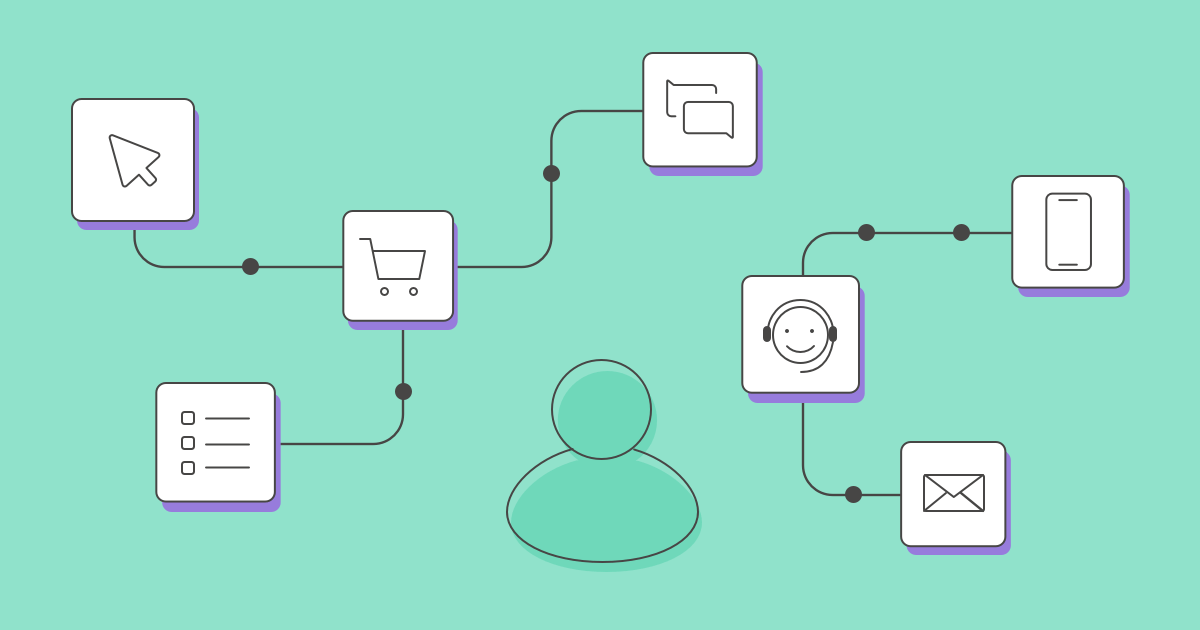We sat down with Michael Bair, SVP of Customer Experience at FIGS to learn how his career learnings helped him build a flourishing CX program at the leading direct-to-consumer healthcare apparel and lifestyle brand for healthcare professionals.
Read the full FIGS case study here.
Can you tell us how you got started in customer experience?
I was lucky enough to take a non-traditional path. I spent my first seven years in sales at a Fortune 50 bank and then moved into customer service. When I first started in customer service, I thought to myself, “This is my calling, this is what I love doing.” And over my career, I realized it was even more than that. Not only did I want to serve customers, I wanted to serve the very best people in the world.
At FIGS, our mission is to celebrate, empower and serve current and future generations of healthcare professionals, who we call Awesome Humans — because that’s exactly who they are. Serving healthcare professionals is so near and dear to my heart because no one is doing more for society and our world than them.
Did you take anything away from your sales experience that influenced your career in customer experience?
When I was in sales, revenue was King. So as I made the transition to the customer service world, I asked myself — what is my “revenue” now? That’s when I quickly discovered (and I say this all the time) that data is revenue for customer experience teams.
Can you expand on the metaphor that “data is revenue” for customer experience teams?
In customer service, you can’t show revenue success the same as you can in sales. For example, in my role now, I can’t stand up in leadership meetings and say, “We closed $14 million in Monthly Recurring Revenue.”
However, I can stand up and tell people things about our current customer experience in really specific terms, with very specific data points. So, in the same way that I used to tackle a revenue or sales target, I do that now with data.
With Delighted reporting, I’m very meticulous about our dispositioning and tagging logic and on our reporting accuracy. Because ultimately, if you want full confidence in your recommendations, you need clean and clear data to tell a story.
And it’s only through data that you can know exactly what makes customers happy and how we can totally wow them. At the end of the day, that’s what I’m maniacally focused on: doing everything we can to make an absolutely amazing experience for healthcare professionals.
How important is it to transition from a reactive to an experiential customer service mindset?
Very important. Every interaction you take in customer service – whether you’re responding to Net Promoter Score (NPS) surveys or you’re on a customer call – you are not just representing your department, you are representing your company.
The same big-picture idea applies to capturing data. As soon as you transition your mindset from thinking of reporting in a transactional way, to a mindset that understands that “data is revenue,” any experience leader can make a powerful impact.
You mentioned using data to tell a story. Why is this important for CX leaders?
I think it’s really, really important to try to figure out what your customers’ stories are, because everyone can connect to stories.
For example, I can say, “10,294 customers last month wrote in requesting a high waisted version of this pant.” That type of data isn’t helpful. What’s more helpful is saying “10,294 customers wrote in about the drawstring on this product because it helps them feel more confident and less distracted when bending over and stretching.”
Or, I can say, “Let me tell you a specific story.” For example, there was a woman, Jane from Reseda, who wears size medium and has purchased from us 14 times. She loves this specific pant but really wishes we had it in high waisted. She said when she’s lifting something heavy and has to bend down low, having the confidence that the back of her pants are not falling is really important. She feels more confident, focused on the task, and comfortable.
In my experience, that type of story is more impactful for product leaders and all senior leaders when making larger product and business decisions. Stories actually drive points home.
There’s a lot of talk about the ROI of customer experience. Is that something you’re focused on as well?
The short answer is no, we don’t really focus on that.
ROI is, of course, important to FIGS, but for us, we know that some things are just right for the customer. And we know that if we do everything we can to honor them, then everything else will take care of itself.
For example, in our FIGSLove program, which is our Surprise and Delight program, we take the special conversations we have over the phone, email, text messages, chat, etc, and find unique ways to acknowledge that human-to-human interaction.
So, when a customer tells us that they are opening a new practice after working hard for 15 years, we send them a bottle of champagne and a card. Maybe they just became licensed or graduated from their program, so we’ll send them a candle with their name on it and congratulate them on their milestone. Some things are just the right things to do. I don’t need an in-depth financial analysis to tell me that.
About Michael Bair
Title: SVP, Customer Experience
Company: FIGS
Michael is a customer success executive who cares deeply about wowing customers, exceeding goals, and developing future leaders. He has worked at diverse organizations from startups to Fortune 50 companies, including B2B SaaS, B2C subscription, and D2C e-commerce.
He has managed customer success, inside sales, customer support/service, and quality assurance teams. He has built teams from scratch to 80+ people. He loves leading organizations with a customer-centric mentality and has been consistently recognized as a leader of people, culture, and values. In 2017, he completed Seth Godin’s AltMBA focused on strategic leadership.




